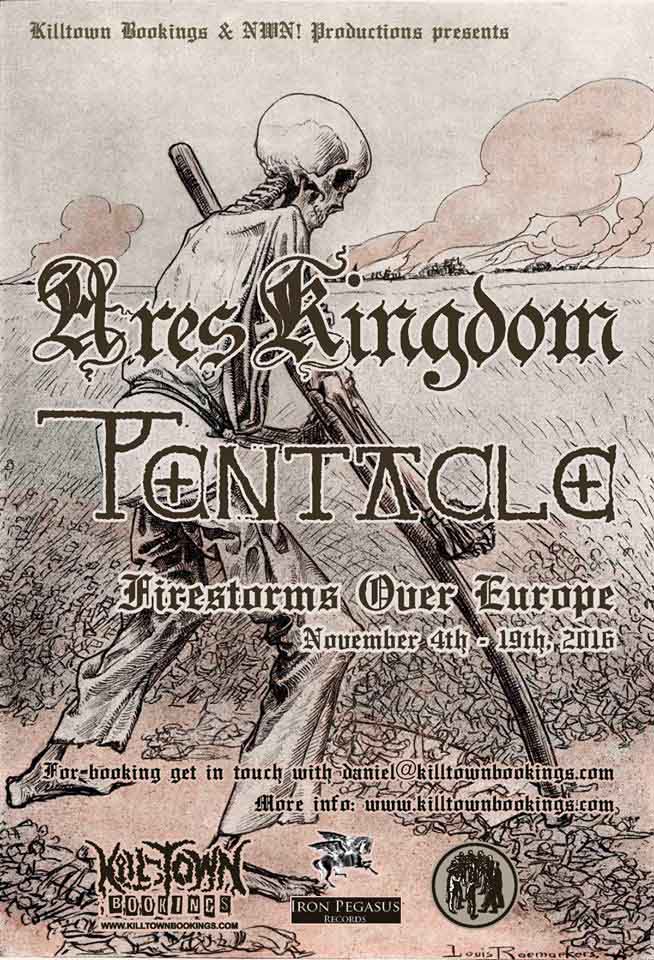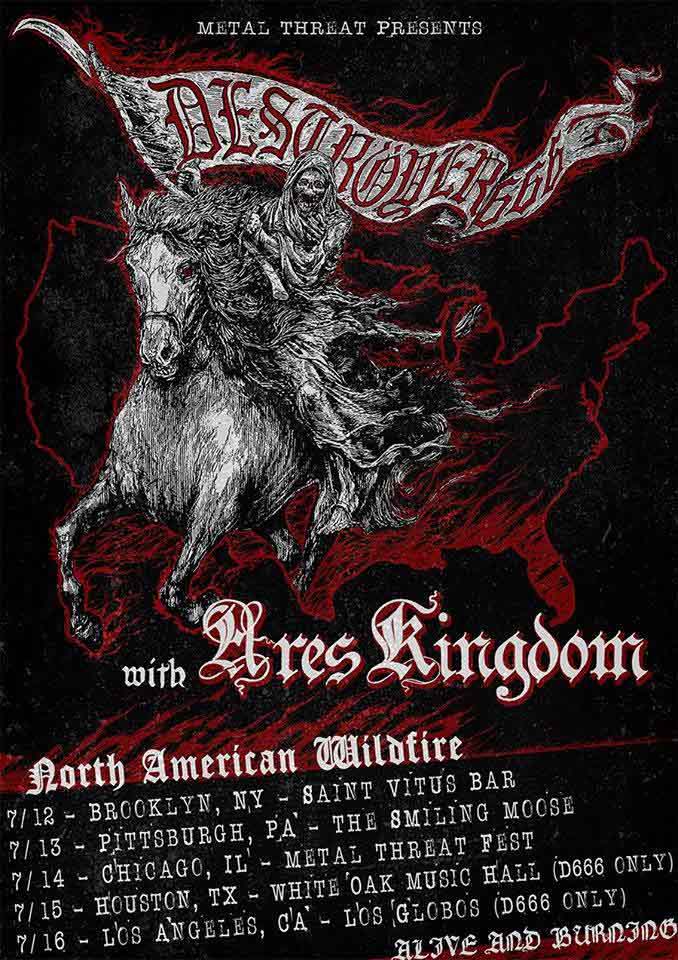
Ares Kingdom and Pentacle have announced a European tour for this November.
5 CommentsTags: ares kingdom, death metal, iron pegasus, iron pegasus records, news, nuclear war now! productions, nwn, Pentacle, Speed Metal, tour, upcoming tours

Ares Kingdom and Pentacle have announced a European tour for this November.
5 CommentsTags: ares kingdom, death metal, iron pegasus, iron pegasus records, news, nuclear war now! productions, nwn, Pentacle, Speed Metal, tour, upcoming tours
Dismember have started their own imprint, Sickening Arts.
7 CommentsTags: carnage, death metal, Dismember, news, Sickening Arts, Swedeath, Sweden, Swedish Death Metal

Deströyer 666 have announced a short North American tour supported by Ares Kingdom.
1 CommentTags: ares kingdom, beer metal, Black Metal, death metal, destroyer 666, news, Speed Metal, tour, tour dates, upcoming tours, US tour
This promotional contribution from the Social Justice Warrior-ridden Baltimore metal scene is terrible; it sounds like Pig Destroyer meets Christian metalcore. The anonymous local supplier bravely contributed a shocking report of a recent Bestial Evil show in Baltimore.
42 CommentsTags: baltimore, bestial evil, bestial evil (usa), christian metal, crustcore, crustfundies, Grindcore, hipster bullshit, homosexuality, Infectious Cross, kevin rucker, metalcore, metalgate, sadistic metal reviews, shawn wright, sjw metal, sjws
Article by Corey M. Whoa that piece of shit is on the toilet lid. Someone has to wipe that down after the photo session. Reaching into toilets to fish out footlong pieces of shit that look like salamanders is what Death Metal Underground staffers do everyday. Our asses are worn out like whoever crapped that one out.
11 CommentsTags: death metal, Heretique, Incarnal, sadistic metal reviews, stinking shit
Death ‘n’ roll goth rockers Tribulation will be touring North America for their first ever headlining run of the continent.
1 CommentTags: death 'n' roll, death metal, goth metal, gothic metal, hipster bullshit, homosexuality, modern metal, progressive speed metal, Speed Metal, tribulation
Modern death metal is a cesspool. Riffless atonal texture and rehashed generic riffs combine into a poppy carnival of random boring bullshit to feed the typical underground record label ponzi scheme. Rare was the new release anything worth the attention of any older fans even over a decade ago in 2005. Coming years after their heroes in Morbid Angel, Incantation, and Immolation stopped releasing worthy or even interesting material (but before they went “radikult”), Dead Congregation’s debut EP, Purifying Consecrated Ground, showed a powerful potential that awed many into submission.
26 CommentsTags: 2005, Black Metal, blackened death metal, Brutal Death Metal, dead congregation, death metal, EP, Martyrdoom Productions, nuclear war now! productions, Nuclear Winter Records, Purifying Consecrated Ground, review
Article by David Rosales. These three brief reviews continue Death Metal Underground’s journey into seventies progressive rock.
5 CommentsTags: 1970s, 1970s Progressive Rock for Hessians, 1972, Ambient, ambient music, Cozmic Corridors, Gentle Giant, German Oak, kraut rock, Octopus, prog rock, progressive, progressive rock, psychedelic
Dave Lombardo has joined Suicidal Tendencies for their European Tour and upcoming album to be released in September 2016.
3 CommentsTags: Crossover, crossover thrash, dave lombardo, news, slayer, suicidal tendencies, Thrash, thrash metal
Czech black metal masters Master’s Hammer have recorded a new album:
4 CommentsTags: Black Metal, Czech black metal, Formulæ, Master's Hammer, news, upcoming release